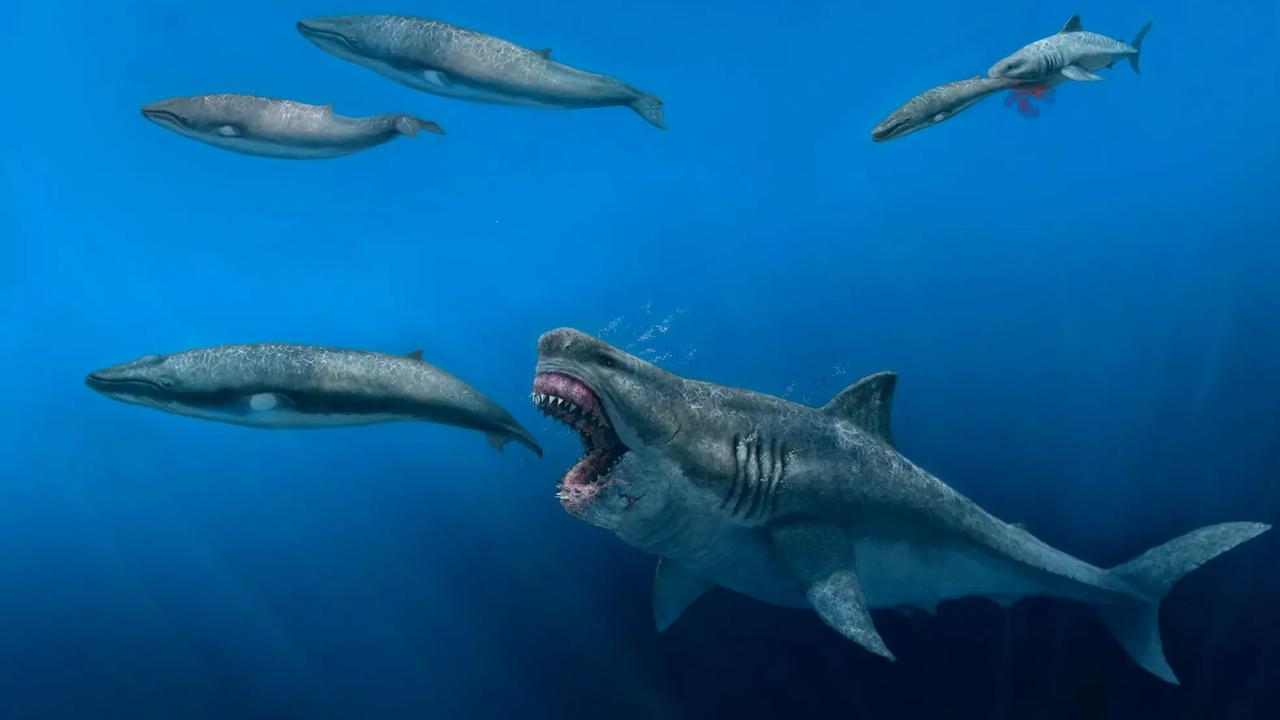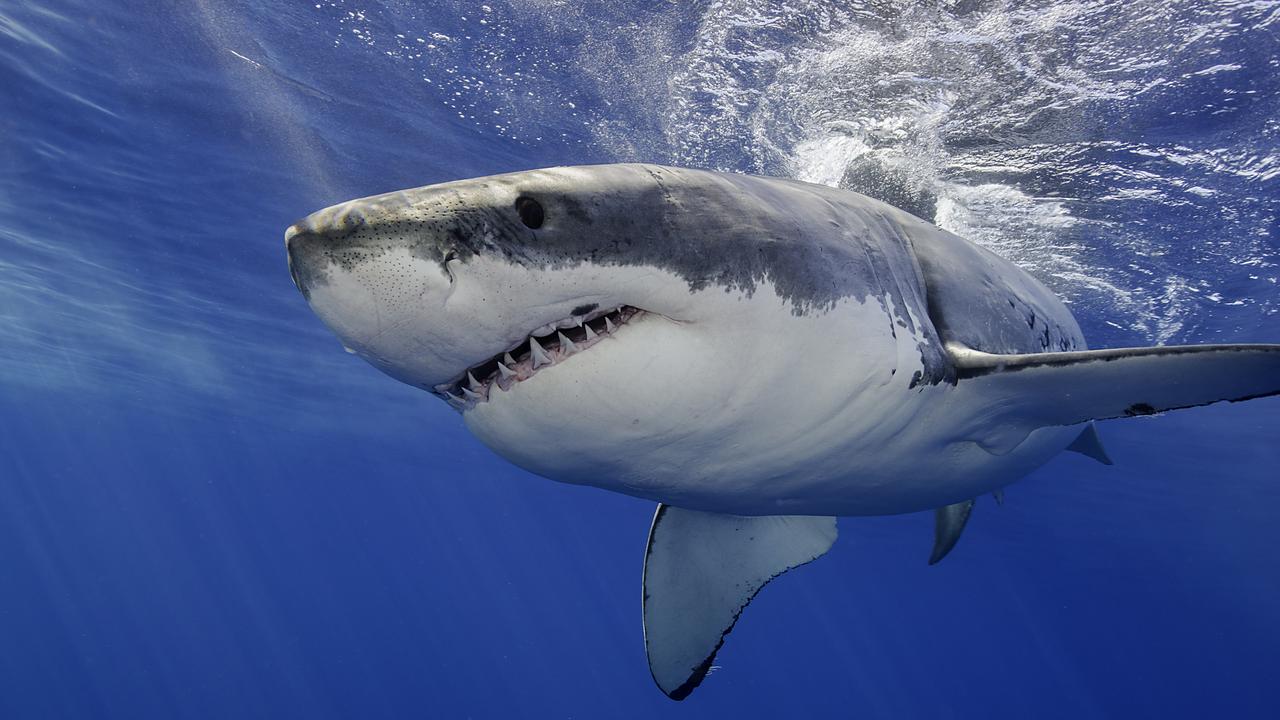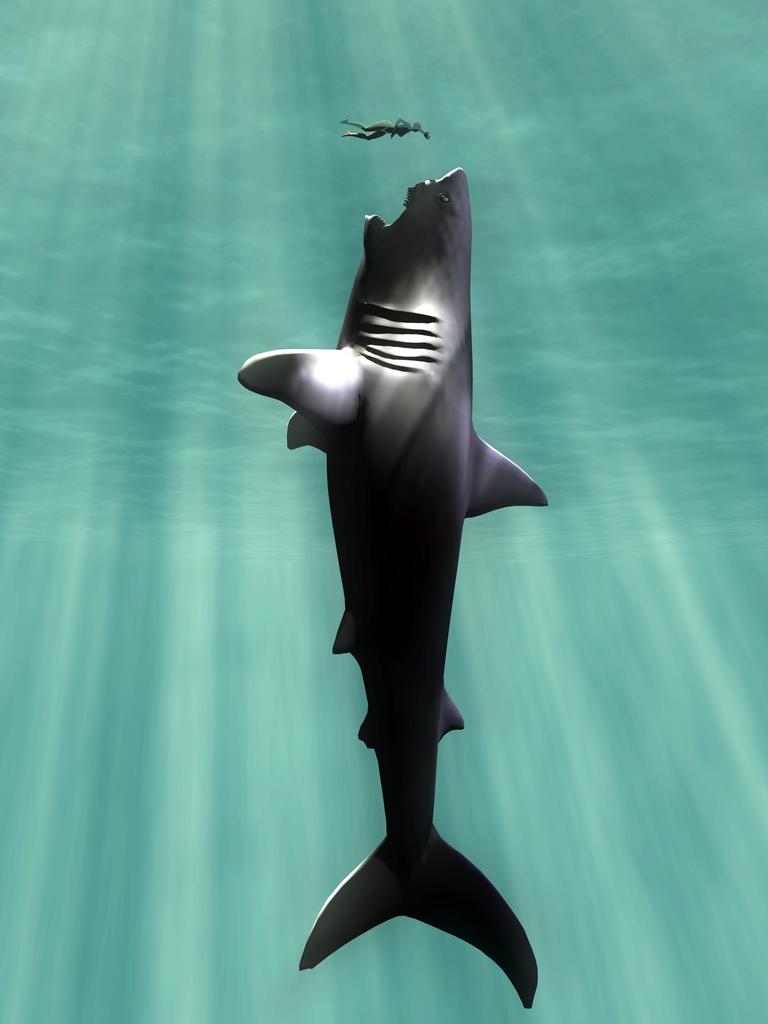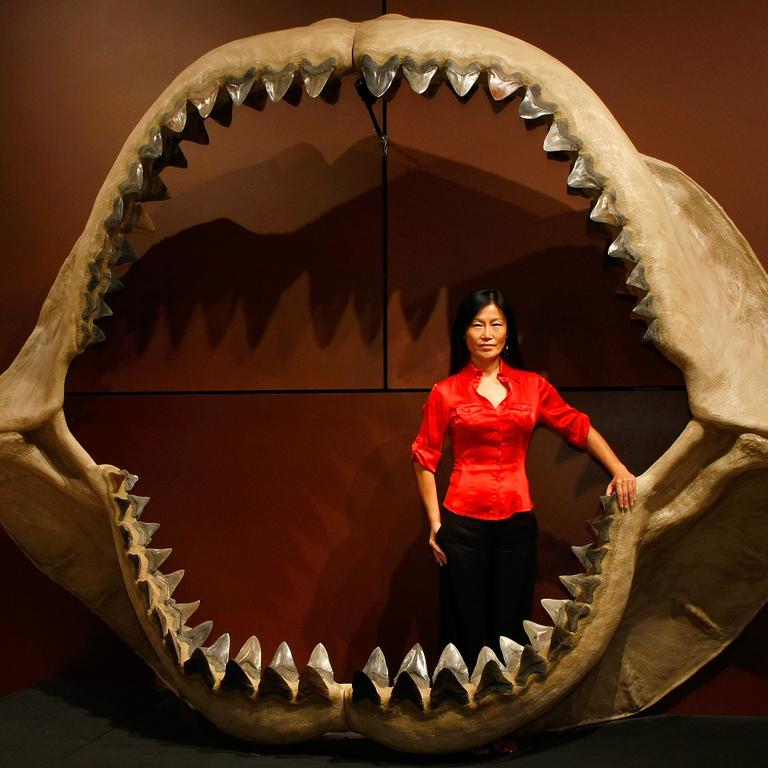Killer whales just a bite-size snack for ancient megalodon
The giant megalodon shark that roamed the oceans millions of years ago could have devoured a killer whale in just five bites, new 3D modelling reveals

READING LEVEL: GREEN
Today’s sharks have nothing on their ancient cousins. A giant shark that roamed the oceans millions of years ago could have devoured* a creature the size of a killer whale in just five bites, new research suggests.
Researchers have used fossil evidence to create a 3D model of the megalodon – one of the biggest predatory* fish of all time – and find clues about its life.
At about 16m from nose to tail, the megalodon was bigger than a school bus, according to the study published in the journal Science Advances. That’s about two to three times the size of today’s great white shark.

The megalodon’s gaping* jaw allowed it to feed on other big creatures. Once it filled its massive stomach, it could roam the oceans for months at a time, the researchers suggested.
The megalodon, which lived an estimated 23 million to 2.6 million years ago, was a strong swimmer too. Its average cruising speed was faster than sharks today and it could have migrated* across multiple oceans with ease, the researchers calculated.

“It would be a super predator* just dominating its ecosystem*,” said study co-author Professor John Hutchinson, who studies the evolution* of animal movement at England’s Royal Veterinary College. “There is nothing really matching it.”
Fellow researcher Dr Catalina Pimiento, a palaeobiologist* with the University of Zurich and Swansea University in Wales, said it had been tough for scientists to get a clear picture of the megalodon.
Megalodon’s skeleton was made of soft cartilage* that didn’t fossilise well, Dr Pimiento said.
So the scientists used what few fossils were available, including a rare collection of vertebrae* that have been at a Belgium museum since the 1860s.

Researchers also brought in a jaw’s worth of megalodon teeth, each as big as a human fist.
Scans of modern great white sharks helped fill in the gaps.
Based on their digital creation, the researchers calculated that the megalodon would have weighed around 63,503kg, or as much as 10 elephants.
Even other high-level predators may have been lunch meat for the megalodon, which could open its jaw to almost 2m wide, Dr Pimiento said.
GLOSSARY
- devoured: ate hungrily or quickly
- predatory: living by preying on or hunting other animals for food
- gaping: wide open
- migrated: moved from one region or habitat to another according to the seasons
- predator: animal that survives by preying on or hunting other animals for food
- ecosystem: a group of living things that live in and interact with each other in a specific environment
- evolution: the gradual development of living things
- palaeobiologist: a scientist who studies fossil plants and animals
- cartilage: a tough tissue in the body that is more flexible and softer than bone
- vertebrae: the bones that form the spine
EXTRA READING
Megalodon loses food fight with great white shark
Great white sharks in growth spurt
Shark cam captures life and death struggles
Inside the shark tank at Sea Life Aquarium
QUICK QUIZ
- How long do the researcher calculate megalodon was?
- How much bigger is this than today’s great white shark?
- How many bites would it take for megalodon to eat a killer whale?
- How long ago did megalodon live?
- Why has it been difficult for scientists to study megalodon?
LISTEN TO THIS STORY
CLASSROOM ACTIVITIES
1. How big?
In this news story, the writer has compared the size of a megalodon to a school bus, it’s weight to 10 elephants and its teeth to a human fist. This technique enables the reader to get a clearer understanding of these facts.
Find out the size or weight of the following animals and then use this technique by comparing them to well-known objects. Write your comparison for each animal as a sentence.
- a reticulated python
- a pygmy marmoset
- a hippopotamus
- a goliath birdeater
- a komodo dragon
Time: allow 20 minutes to complete this activity
Curriculum Links: English; Mathematics
2. Extension
Megalodons were HUGE! Write a list of synonyms for “huge”. How many can you list in 5 minutes?
Time: allow 5 minutes to complete this activity
Curriculum Links: English
VCOP ACTIVITY
Read this!
A headline on an article – or a title on your text – should capture the attention of the audience, telling them to read this now. So choosing the perfect words for a headline or title is very important.
Create three new headlines for the events that took place in this article. Remember, what you write and how you write it will set the pace for the whole text, so make sure it matches.
Read out your headlines to a partner and discuss what the article will be about based on the headline you created. Discuss the tone and mood you set in just your few, short words. Does it do the article justice? Will it capture the audience’s attention the way you hoped? Would you want to read more?
Consider how a headline or title is similar to using short, sharp sentences throughout your text. They can be just as important as complex ones. Go through the last text you wrote and highlight any short, sharp sentences that capture the audience.

